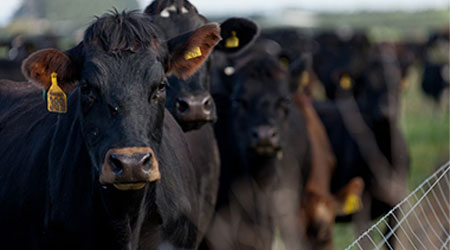Starch and energy a priority for calving cows to complement potential farm feed shortcomings

While most dairy farmers are heading into Spring calving with lush grass cover, cows may need more starch and energy to compensate for pasture deficiencies this season.
Unusually high rainfall and warmer temperatures across the country this Autumn have resulted in exceptional grass cover for many areas. However, SealesWinslow Nutrition and Quality Manager Paul Drew says pasture testing carried out by the company shows there could be nutritional deficits in pasture this season that need to be addressed.
“While pasture may look good, it may not give cows the energy they need to set them up for calving. Some of our farmer customers dried off early because they couldn’t sustain production as well as meet body condition score targets for next season.”
While grass will always be king, Paul says there are times when the cow’s unique nutritional needs cannot be met by pasture alone.
“Best practice is to make sure body condition score targets for calving are met at dry off. Given the poor pasture quality on some farms, it has been difficult to achieve those targets on pasture alone. Most farmers have needed a supplement to make sure cows have enough energy and starch to keep the rumen working and better utilise the pasture available.
“If farmers do find themselves in the unfortunate position of not having met body condition scores at dry off, it’s essential they prepare the cow for her following lactation by optimising body condition now. This is more difficult to do during the dry period. But complimenting pasture and available farm feeds with a good amount of starch and energy can help.”
Paul says a lot of farmers still think they can feed 2kg per cow per day of palm kernel and they will be fine. But they need to consider how best to fire up a cow’s rumen and get it working efficiently.
“It’s not just about gut fill. A balanced approach to starch, fibre, energy, and protein will optimise rumen performance and provide the best value from the cow’s entire feed ration, including grass.”
Paul says how farmers feed their cows heading into calving can have the single biggest impact on farm profitability, not just this season but next.
“It has a flow on effect. If you’re not keeping up the energy levels of your herd at this time of year and meeting those body condition scores you will be constantly playing catch-up.
“Achieving body condition targets is key to driving production and reproduction performance during the following season. So, it’s important to get nutrition right. Focusing on nutrition just prior to calving in the ‘close-up’ transition period is key to reducing metabolic disease at calving and giving the cow the best possible start to the next lactation cycle.
“This is a difficult time to ensure the cow is consuming enough energy and protein for her and her growing calf. It is just as important to have a strategy to promote calcium mobilisation post calving to avoid the likes of milk fever.”
Paul is encouraging dairy farmers to make informed nutritional decisions to give them confidence they are meeting the nutritional needs of their herd between now and calving. He recommends getting expert nutrition advice to make sure they have the right solutions to complement feeds available on farm.
“As herd nutrition has become more precise in recent years, many farmers have seen firsthand the benefits of taking a more scientific approach to feeding their cows. This makes sense now more than ever,” he says.
“With production costs at an all-time high, farmers need to see a return on their feed investment. It’s not just about grabbing ingredients, blending them, and feeding cows for the sake of it. Farmers need to think more technically about the return on the investment they’re getting when they buy feed.”
Paul says if cows are converting feed into milk in the most efficient way, they also emit less methane and nitrogen. Something that should be on every farmer’s radar right now.
“It’s complex and scientific, but this is the approach to nutrition we need to help farmers take, especially as they look for ways to start reducing their on-farm emissions and satisfy dairy company and global customer requirements.”


